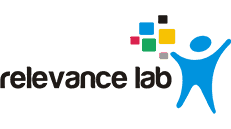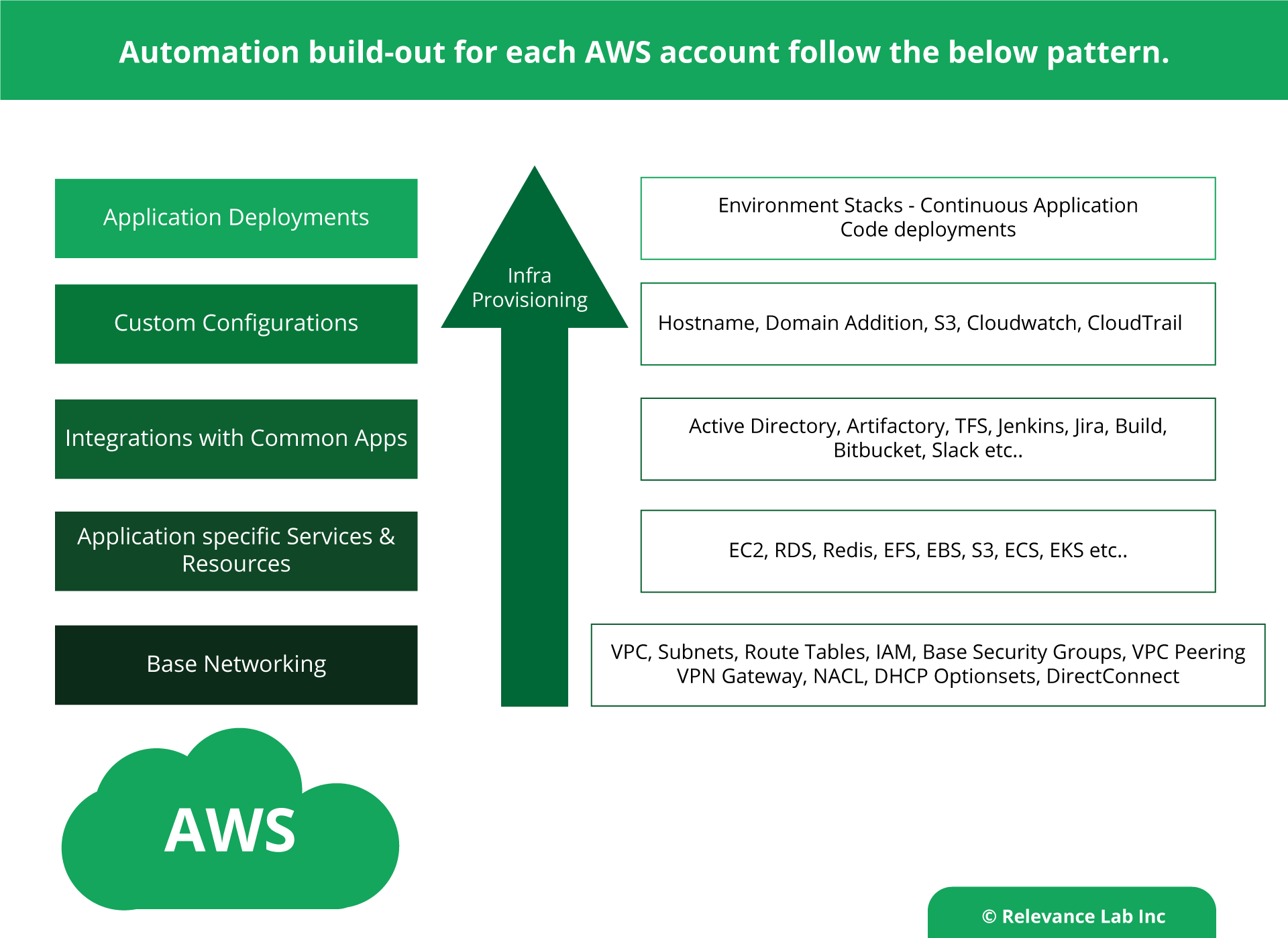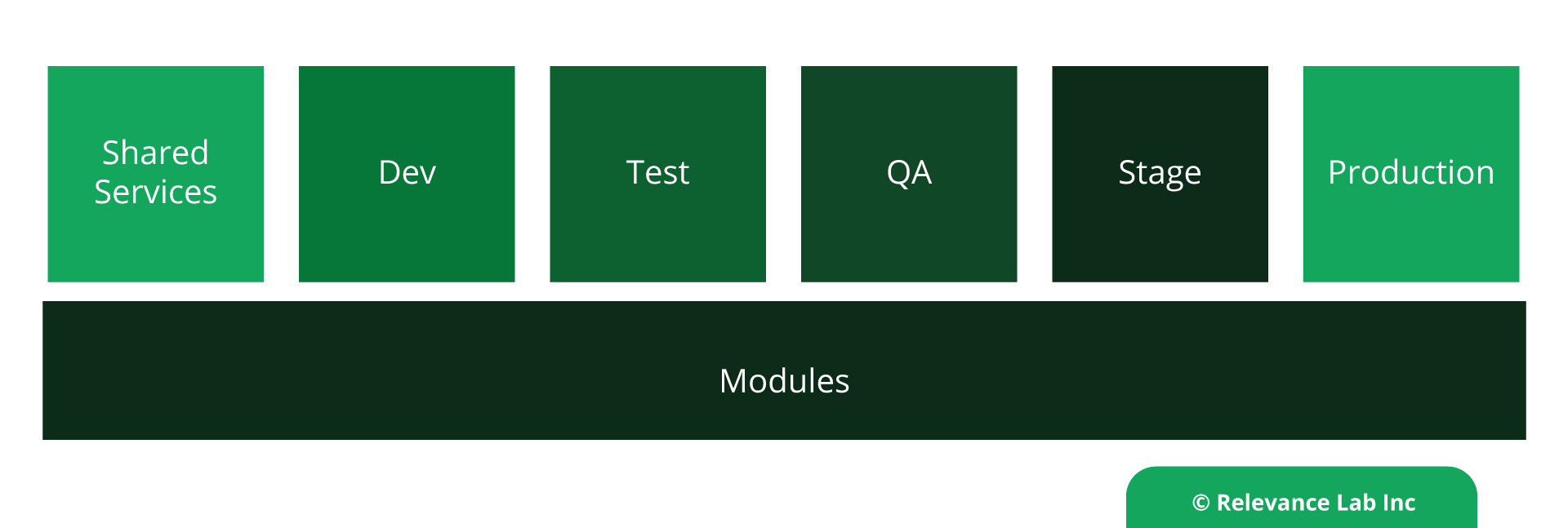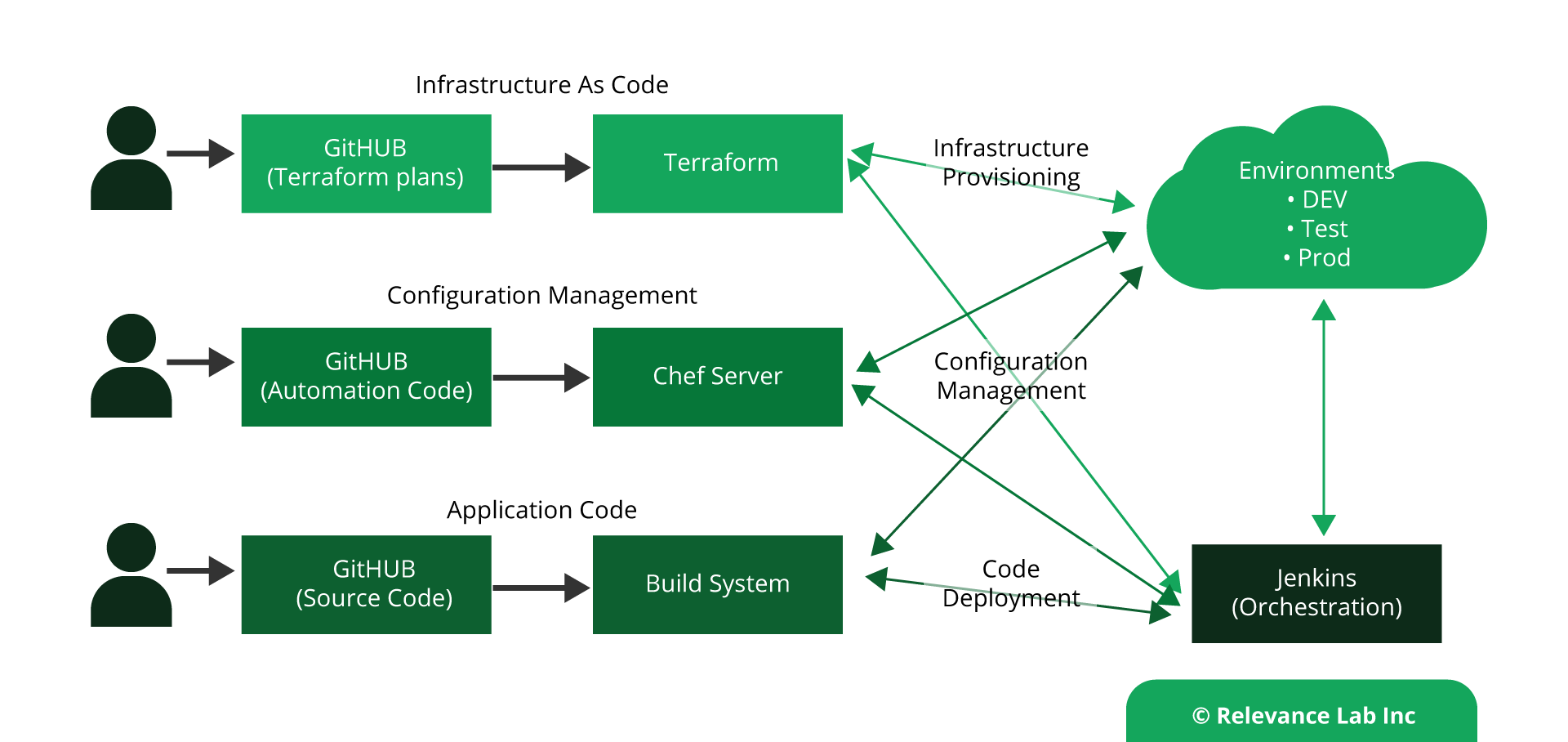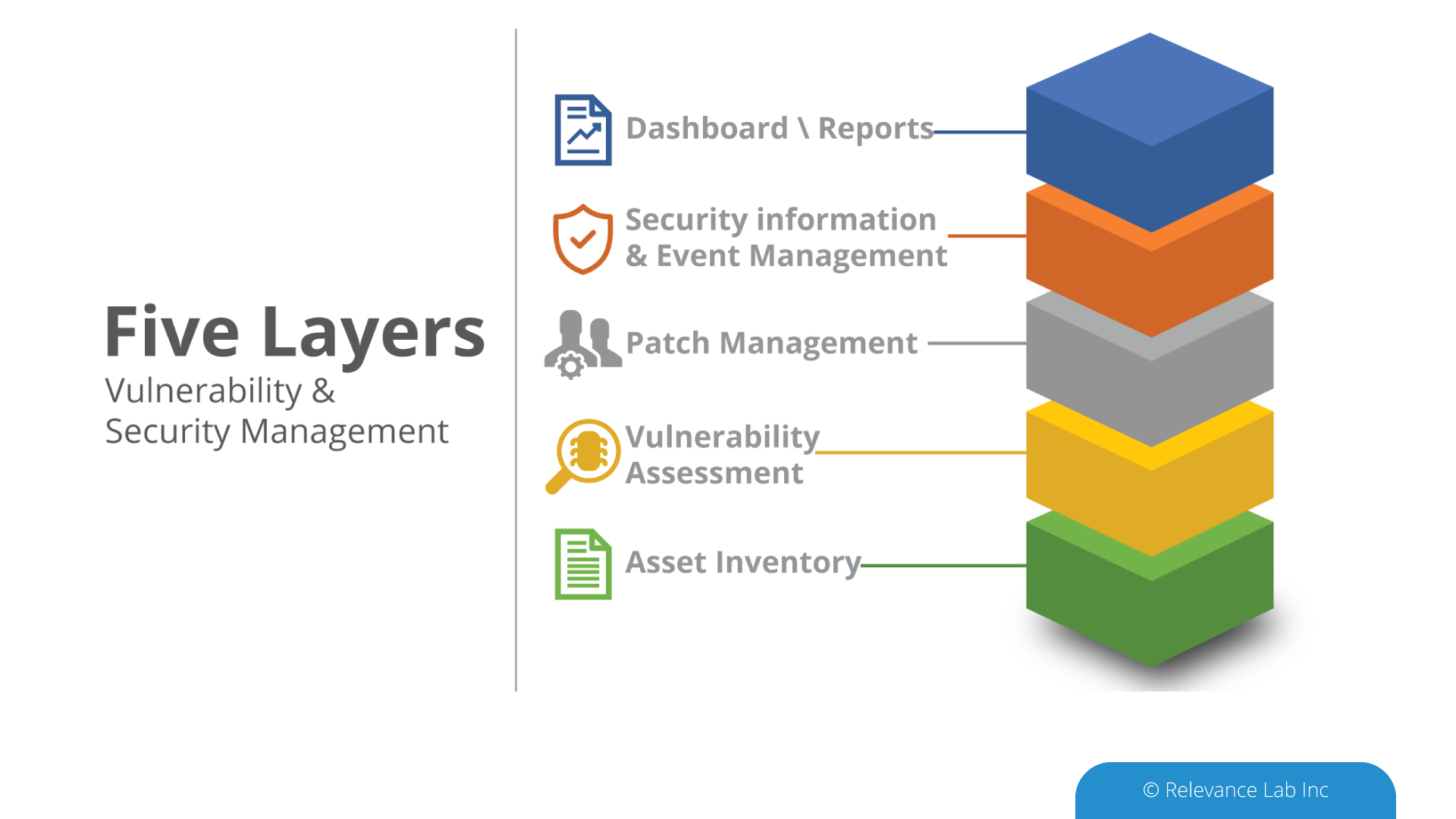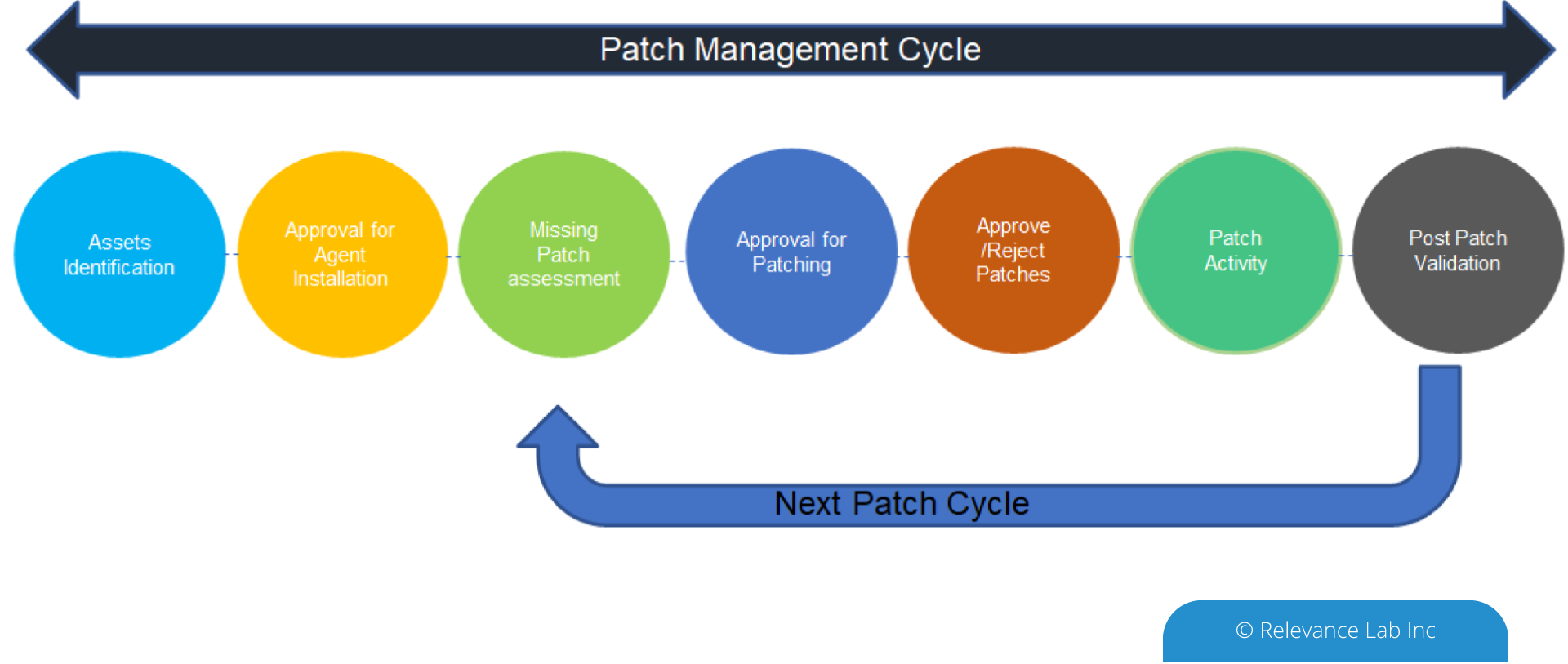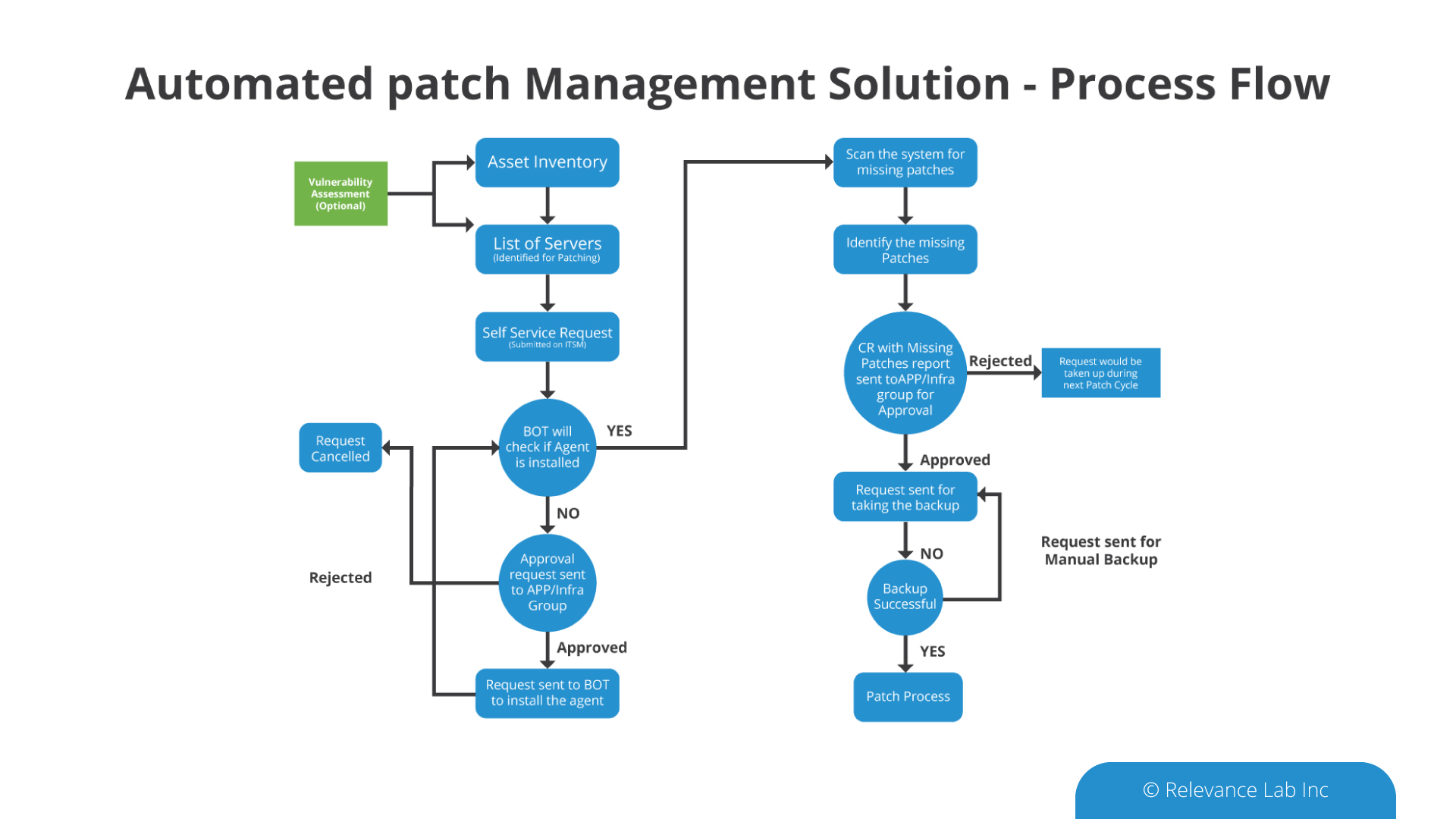2023 Blog, AIOps Blog, Blog, Featured
As part of growing interest and attention on GenAI market trends, the priorities for enterprises in 2023 have rapidly shifted from tracking the trends to tremendous pressure of adopting this disruptive technology. While the interest is very high, most enterprises are grappling with the challenge on where to start and what best approach to use. Investments from CIO budgets are being quickly carved out, but the basic dilemma remains on early use cases, security & privacy issues with enterprise data and which platforms & tools to leverage. Relevance Lab has launched an “AI Taskforce” that covers key internal participants and customer advisory teams for this innovation. The primary focus is to define core and priority themes relevant for business and customers based on current assessment. This is an emerging space with a lot of global investments and innovation expected to drive major disruption in the next decade. We believe that requires an iterative model for strategy and an agile approach with focused concept incubations to work in close collaboration with our customers.
Customer Needs for AI Adoption
The most common ask from all customers is using GenAI for their business with the primary goals around the following business objectives:
- Enhancing their end customer experience and business outcomes.
- Saving costs with better efficiency leveraging the new AI models & interaction channels.
- Improving their core Products & Offerings with AI to ensure the business does not get disrupted or irrelevant against competition.
The figure below captures the summary of customer asks, common business problems, and categories of solutions being explored.
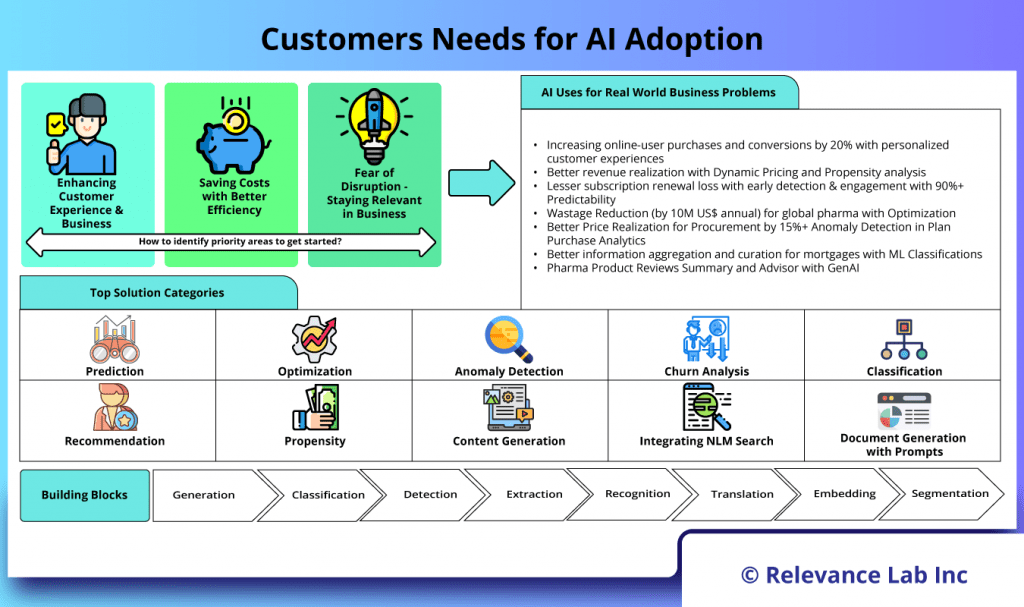
Translating the above objectives to meaningful and actionable pursuits require focusing on key friction points and leveraging the power of AI. Some common use cases we have encountered are following:
- Increasing online-user purchases and conversions by 20% with personalized customer experiences.
- Better revenue realization with Dynamic Pricing and Propensity analysis.
- Lesser subscription renewal loss with early detection & engagement with 90%+ Predictability.
- Wastage reduction (by 10M US$ annual) for global pharma with AI-Led Optimization Algorithms.
- Better price realization for procurement by 15%+ Anomaly Detection in Plan Purchase Analytics.
- Better information aggregation and curation for mortgages with Machine Learning (ML) classifications.
Following are early initiatives being taken for our customers leveraging GenAI:
- Pharma Product Reviews Summary and Advisor with GenAI.
- Deployment of Private Foundation Models and training with custom data & business rules for Advisory services in Financial Services.
- Use of Chatbots for easier user and customer support for Media customers.
- Access to Business Dashboards with Generative Models using prompts for E-Commerce customers in Retail.
- Increasing productivity of Development and Testing efforts with GenAI specialized tools for Technology ISVs.
There is no doubt that the momentum of such early technology adoption is growing everyday. This needs a structured program for collaboration with our customers to look for common building blocks and rapid models’ creation, training, deployment, interactions, and fine-tuning.
Relevance Lab AI Compass Framework
We have launched the “Relevance Lab AI Compass Framework” to guide and collaborate with customers in defining the early areas of focus in building solutions leveraging AI. The goal is to have this as a prescriptive model helping jumpstart the adoption of Enterprise and GenAI “The Right Way”. The figure below explains the same.
The AI Compass Framework takes a 360 degrees perspective on assessment of AI needs for an enterprise across the following pillars.
- Product Engineering – building products that embed the power of AI
- Business Data Decisions enhanced with AI
- Machine Data Analysis enhanced with AI
- Using GenAI for Business
- Platform AI Competences – choosing the right foundation
- Cloud AI Services – leveraging the best of breed
- Digital Content with GenAI
- Robotic Proces Automation enhanced with AI and Intelligent Document Generation
- Preparing Enterprise Workforce – Training with AI
- Managed Services & Support made more efficient & cost effective
- Improving internal Tester and Quality Productivity with AI Tools
- Developer Productivity enhancements with AI Tools
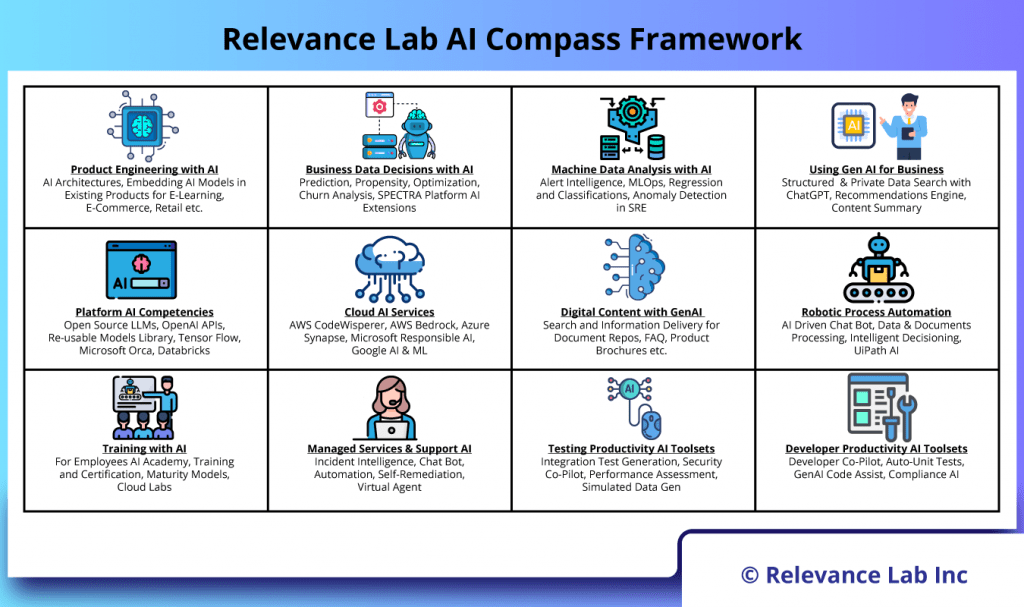
Relevance Lab is getting deeper into the above pillars and building the right design patterns for guiding our customers on “The Right Way” for enterprise adoption. The plan is also to build a foundation AI applications platform that will speed up adoption for end customers, saving them time, effort and with quality deliverables.
Product Engineering with AI
This pillar focuses on how to make AI Architecture and Design patterns part of better Product Design. The charter is to find and recommend new architectures and integration with new GenAI models for making existing software products smarter with embedded AI techniques. We expect new products to adopt an “AI-First” approach to new developments. Every product in their focused vertical (Healthcare & Life Sciences, BFSI, Media & Communication, Technology) will need to embed AI into their core architecture.
Business Data Decisions with AI
This pillar defines AI-enhanced Data Engineering for common use cases and building blocks. The traditional focus of AI initiatives has been on using primarily giving agile & actionable insights to the following:
- What happened in my business – this is Informative?
- What will happen – this is Predictive?
- What should be done – this is Prescriptive?
The new dimension GenAI has added to the above is around “Generative” capabilities. Along with the need for building new features, there is growing adoption of popular data platforms like Databricks, Snowflake, Azure Data Factory, AWS Data Lake etc. that need to integrate with product specific AI enhancements.
Machine Data Analysis with AI
Customers already have focus on DevOps and AIOps with large data generated from Servers, Applications, Networks, Security, and Storage using different monitoring tools. However, there is a deluge of information and need of reducing noise and improving response times for effective operations support. This needs Alert Intelligence to reduce alert fatigue and incident intelligence to observe data across layers for faster issue diagnosis and fixes. Anomaly detection is a key need with time series data to look for odd patterns and flag risks for security, vulnerabilities, etc. While AIOps brings together the need for AI across Observability, Automation, and Service Delivery there are ways to leverage new GenAI tools for better Chatbots support in reducing operational costs and increasing efficiency. A common ask by customers is about the ability to predict a failure and prevent an outage in real-time with AI using these models. This requires design of Site Reliability Engineering (SRE) solutions to be more effective with AI techniques.
Like Infra and Apps intelligent observability with AI/ML Models, there is a growing need for Data Pipelines Observability with specialized models. With growing scale of ML Models, there is need to track drift across design, model and data for such pipelines with dashboards for visualization and actionable analytics.
Using GenAI for Business
One of the most common asks is to leverage ChatGPT APIs and suggest ways to leverage the disruptive technology for existing customer and internal needs. Leveraging this tool to reduce internal costs and improve external end customer experience with quick projects to define common use cases and how to get deeper with customer’s specific personal data and models.
We are working with early adopter customers on how to prepare and leverage GenAI for their business problems across different verticals. All large enterprises have carved out special initiatives on “How to Use GenAI” and we offer a unique program to incubate these projects.
Platform AI Competencies
These platforms are leading innovation and solutions for companies to build specialized applications leveraging AI in areas of Open Source LLMs (Large Language Models), OpenAI APIs, Reusable models library, TensorFlow, Hugging Face, Open-Source LangChain Library, Microsoft Orca, Databricks, etc. This pillar gets deep into specialized use cases for feature extraction, text classification, prompt engineering, Chatbots, Summarisation, Generative Writing, Ideation, Reinforced Learning etc.
Cloud AI Services
With significant existing investments of customers on public cloud providers like AWS, Azure, and GCP there is a growing need for leveraging specialized AI offerings from these providers to jumpstart adoption with security and scalability in enterprise context. Also, there is a growing momentum of new GenAI solutions from these providers like AWS CodeWhisperer, Amazon Bedrock, Azure Synapse, Microsoft Responsible AI, and specialized tools & training from Google Cloud. The growing adoption will require deep understanding and support for MLOps and LLMOps for efficient and cost-effective operations.
Digital Content with GenAI
One of the biggest impacts with GenAI is the evolution of smarter search and information access across customers’ existing repositories of documents, FAQ, content platforms, product brochures etc. These cover all sorts of unstructured and semi-structured information. Customers are looking to leverage Public and Proprietary LLM (Large Language Models) Models with their personal data repositories and fine-tuned models of custom business rules. This requires customers to build, train, and deploy their own models with control on security and data privacy protected.
The right architectures will have a balance between different approaches of using standard models with enterprise data vs privately deployed models for enterprise content solutions.
Managed Services & Support AI
Chatbots and GenAI can help improve the Support Lifecycle of Monitoring, ServiceDesk, TechOps, Desktop Support, User Onboarding/Offboarding. They can help in cost reduction and become more efficient in daily tasks.
This aligns with customers focus on Managed Services, ServiceDesk, Command Centre, Technical Operations, and Security Ops. This pillar looks deeper into exploring AI techniques for Incident Intelligence, Chatbots, Automation, Self-Remediation, and Virtual Agents to be more productive and efficient. Relevance lab has leveraged “Automation-First” approach for greater productivity, effective operations & compliance.
Robotic Process Automation with Intelligence
RPA (Robotic Process Automation) is bringing significant gains for business process automation in areas of repetitive & high frequency tasks along with better quality & compliances for use cases across different industries and corporate functions. With AI, a lot of additional benefits can be achieved for making business process frictionless. This pillar focuses on specialized use cases related to AI-Driven BOTs, Data & Documents Processing, Intelligent Decisioning by leveraging AI tools from key partners like UiPath & Automation Anywhere.
Training with AI Technology
Companies are embarking on the goal to make all their employees AI skilled and certified. Leveraging AI tools in everybody’s day-to-day charter will improve the job efficiency. This requires setting up an AI-Lab for internal trainings and certifications. To create such a strong foundation, this pillar is looking into creating an AI Academy and have a program that drives “Self-Service Learning” and “Accreditation” based on a structured program.
Developer & Testing Productivity with AI Tools
Adoption of AI and GenAI tools are key goals for smarter, faster, better outcomes. For testers, the specific areas of focus are around Automated Test Case Generation, Integration Test Generation, Security Co-Pilot, Performance Assessment, Simulated Data Gen. For developers, similar plans for boosting productivity using Developer Co-Pilot, Auto-Unit Tests, GenAI Code Assist, Compliance AI.
Co-Development Opportunities with Customers
As part of expediting the innovation in this emerging area, we are launching a co-development program with early participants to build on use cases specific to customer verticals and domain needs. We have dedicated specialized teams working on deep GenAI and Enterprise AI skills and building re-usable components. We are offering a special six-week program for incubation and jumpstart of GenAI adoption by enterprises to build one specific use case.
To know more about how to collaborate and sharing your ideas for GenAI early adoption, contact us at AICompass@relevancelab.com
References
AI Foundation Model: Generative AI on AWS
Azure OpenAI on your Data
Google Generative AI Service Offerings Designed to get you up and Running Fast
Revolutionize your Enterprise Data with ChatGPT
A CIO and CTO Technology Guide to Generative AI
